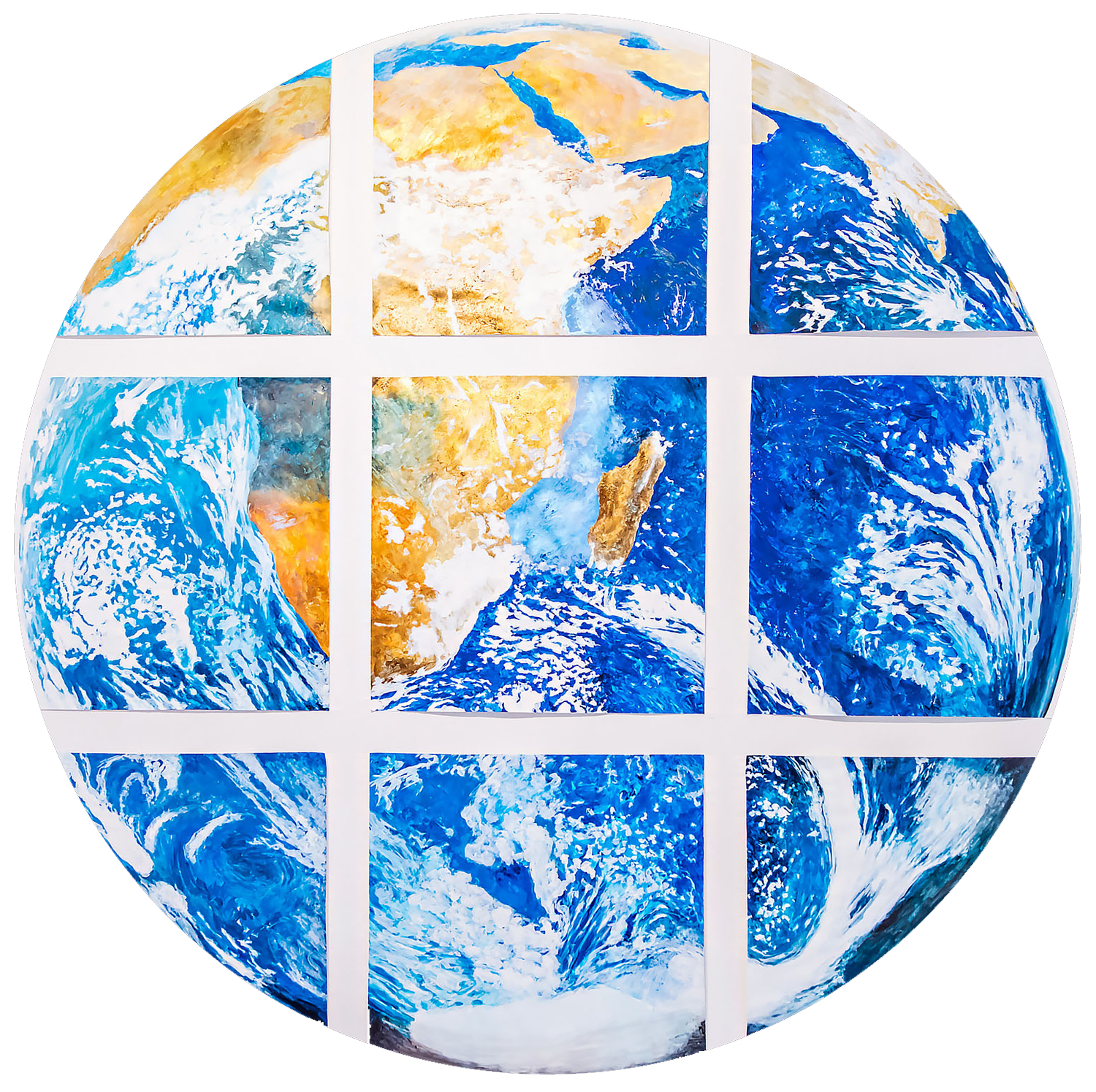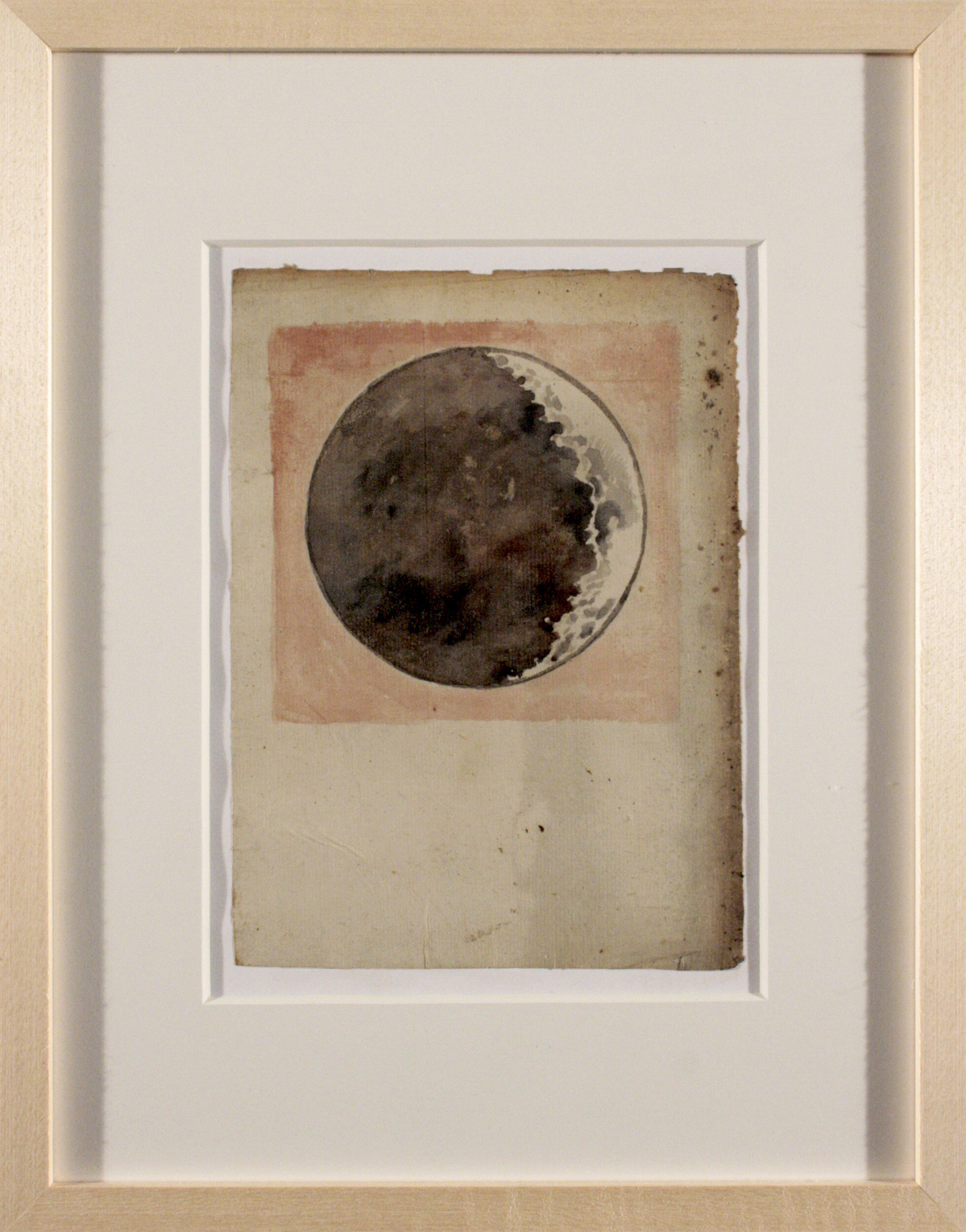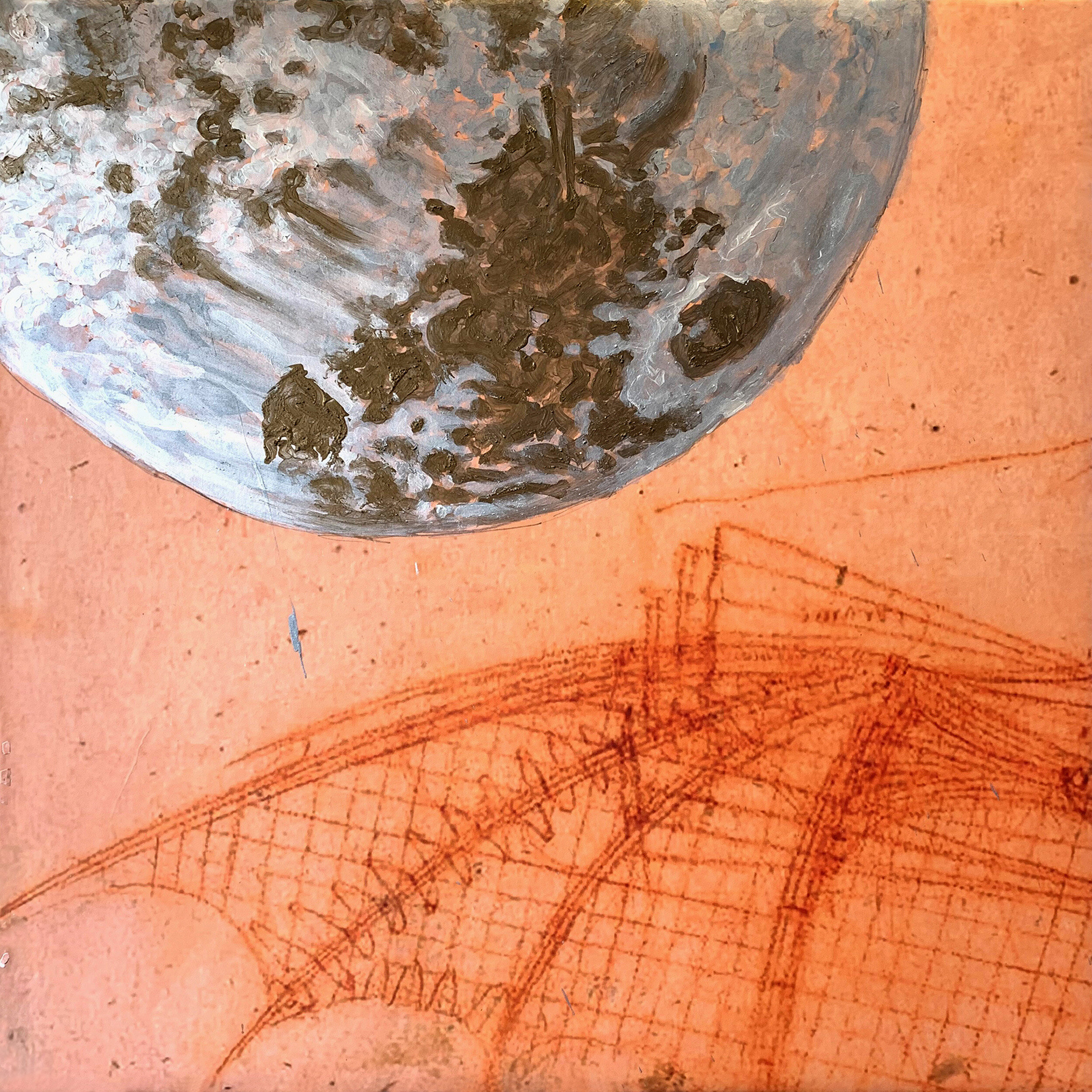Davide ragazzi artist statement
I started my Contemporary Art research in 1993. The Earth, the Moon,and the rocky planets are subjects of visual research. My painting technique is energetic, fast, gestural, when I use enamels; slower, descriptive, with stratified or thicked texture, when I use acrylic and oil paints. In my works of art, the subjects portrayed, the techniques used and the supports chosen tell a deeping relationship between ancient and contemporary world, which I have been exploring since the beginning of my research.
The relationship between me and my audience, the comparison with other artists and citizens have always been essential for me. My workplace is an international atelier and gallery open in Genoa, Italy, since 2004. In my art studio I present events to show works of art and explain art research.
My Cosmo Art, mainly represented by paintings and installations, is originating from Science. The personal approach to figuration of planets and moons starts from the study of satellite photographs reinterpreting according my visual code.
Davide Ragazzi, Chasms on Dione, 50x50 cm, iridescent acrylic color on canvas, 2020
To represent a detail of Dione, a moon of Saturn, in Chasms on Dione (50x50 cm, iridescent acrylic color on canvas, 2020) I made a pencil drawing of the subject on the canvas, then I spread a background of color with a gradient from light to dark; in the upper part I used an iridescent white (not pure white; white that turns to silver but very bright and clean) and a pearly white iridescent acrylic. By blending a light iridescent acrylic silver color and a darker silver I made the darkest part of the pattern. With the dark color I made also some sketches to decrease static and add randomness. With dark iridescent silver and iridescent acrylic black I created a dark glazing to increase the contrast between some white chasms and the bachground pattern. Once dry, I added some mica black color (metallic but darker) to increase the contrast in some parts. In the upper part, which is the brightest part, to avoid that it seems to have little depth, with a bright color, tending to an iridescent silver and a pearly white, I have highlighted the volumes of the craters in the bright upper part.
Davide Ragazzi, Venus clouds, 100x100 cm, acrylics colours on canvas, 2020
In Venus clouds (100x100 cm, acrylic color on canvas, 2020) I started from an infrared image of Venus seen by the Japanese Akatsuki spacecraft. The clouds involving Venus take on important value as they allow me both to return the movement with fast and violent brush strokes and chromatically reworked with strong bodies in gold, bronze and silver, in the brightest points, alternating with metallic blue masses.
Davide Ragazzi, Mars, 50x50 cm, acrylic color on canvas, 2020
In Mars (50x50 cm, acrylic color on canvas, 2020) I have wanted representing the planet how we know it: the red planet. Large and small craters are highlighted with large and contained brush strokes; bright areas of red are accompanied by darker and darker areas, bringing the three-dimensional aspect. For this painting I used various reds; the red of Mars the copper color and the cadmium orange. I also used the black of Mars and iridescent silver in a particular lower portion of the planet to remember the presence of ice on the planet.
Davide Ragazzi, Golden Moon, 60x60 cm, acrylic color, ancient paper and filmsy paper framed on canvas 2020
In Golden Moon (60x60 cm, acrylic color, ancient paper and filmsy paper on canvas, 2020) there are one subjects and two supports, fundamental elements of my research: the Moon, the ancient paper with printed text, the ancient manuscripts on paper. The Moon is represented monochrome with a rich acrylic Gold in order to restore splendor and brilliance and a certain highly tactile feature in highlighting the lunar elements.Precisely for this aesthetic and conceptual aspect of their presence, the ancient papers emphasize the union with the Moon, timelessly apparently suspended in an eternal moment.The presence of the text and above all of the original ancient manuscript sharpens the link between the painting and the spontaneous calligraphic part as fast as my painting.
Davide Ragazzi, Evanescent Moon, 50x50 cm, acrylic colors on filmsy paper and ancient paper framed on canvas, 2019
In Evanescent Moon (50x50 cm, acrylic colors on filmsy paper and ancient paper framed on canvas, 2019) I started using iridescent acrylic colors for the first time. I was looking for an evanescent Painting; the mass, the material, the body of color have given way to the lightness, the glazing of a monochromatic layer of metallic acrylic color with iridescent base. The vision of this work is a vibrant experience: the work dialogues with the staging space and offers the observer numerous visions, from different points of view, thanks to the refraction of both natural and direct light.
Davide Ragazzi, Earth two, 50x50 cm, acrylic colors on antique handwritten paper, 2015
The subject of many works is an overall of the planet Earth. In Earth two (50x50 cm, acrylic colors on antique handwritten paper, 2015) the oceans and the masses of the atmosphere make up a vision of the material and plastic globe, painted on ancient manuscript papers: letters and calculations of landowners, marked by the signs of usury and time, which give back to the observer the echo of life tied to the Earth.
Davide Ragazzi, Destinazione Luna, 100x100 cm, charcoal, oil and enamels on canvas, 2002
In Destinazione Luna (100x100 cm, charcoal, oil and enamels on canvas, 2002), violent and gestural brush strokes have given life to lunar figuration with irregular profile, almost with the intention of letting the subject out of its form. The red hues (red colors and variations obtained by blending the reds with the whites) surround the net profile of an airliner caught in its apparently peaceful flight.
Davide Ragazzi, Luna e Terra, 120x120 cm, enamels and digital printing on acetate, enamels on paper, 2001
From 1999 I have created many works using a particular technical process that you can see in Luna e Terra (120x120 cm, enamels and digital printing on acetate, enamels on paper, 2001) I reproduced the Earth planet and its satellite in a three dimensional structure: on 63 acetate tiles, with ancient manuscript print, lying on a sheet of paper, slightly spaced from each other, I painted letting the brush slide over the tesserae and also in the gaps between one card and another. With dry enamel, I detached the tesserae from the paper and glued them on a soft pvc sheet. Before weaving the PVC, I fixed the paper previously used with the parts painted between one card and the other on the bottom of the frame.
tributes to galileo galilei and leonardo da vinci by davide ragazzi
Art and Science are two disciplinary fields that I has always interconnected in the works of art since the beginnig of my art research. The flight, the flying man, the Earth seen from space, the Moon, the rocky planets are subjects of visual research for over 20 years. I have made a tribute to Science and a personal atlas of the cosmos. In 2019 I made a tribute to two scientists of the past who represented human scientific and technological progress through visual research: Galileo Galilei and Leonardo Da Vinci.
Davide Ragazzi, Tribute to Galileo’s Moon 1, 14x24 cm, watercolor on modern and antique paper, 2019
The first realistic representation of the Moon was given back by Galileo Galilei in 1609, when, after his telescope observations of the Moon, he realized drawings, watercolors and etchings of the Moon to be used for the publication of his Sidereus Nuncius (1610). In the Biblioteca Nazionale of Florence, are preserved two sheets, kept together, by Galileo, with the manuscript of Sidereus Nuncius: 7 watercolors made by Galileo after his telescope observations (named by researchers as F1-F7). To make my Tribute to Galileo’s Moon I have taken as models 6 watercolors upon the sheet n. 28 (BNCF, Gal. 48, f.28), wash images made in brown-ink representing Moon Phases observed by Galileo from November 30th 1609 to December 2nd 1609.
davide ragazzi, tribute to galileo’s moon 1
Davide Ragazzi, Tribute to Galileo’s Moon 1, 14x24 cm, watercolor on modern and antique paper, 2019
Tribute to Galileo’s Moon 1 is my first work of art made on ancient and contemporary paper using watercolor technique.
Tribute to Galileo’s Moon 1 is available in the online store
The subject reproduced in this work of art is a personal reinterpretation inspired by F2: Galileo’s watercolor representing the Moon phase he observed on November 30th 1609 (BNCF, Gal. 48, f.28, top left).
davide ragazzi, tribute to galileo’s moon 2
Davide Ragazzi, Tribute to Galileo’s Moon 2, 14,5x16 cm, watercolor on modern and antique paper, 2019
Making this serie of works, I studied Galileo's watercolors and I considered them as a graphic trace for works containing personal elements of my research, about paper, color, glazes and not just subjects for copies.
Tribute to Galileo Galilei 2 is available in the online store
This contemporary work of art reproduces a personal interpretation of F3: Galileo’s watercolor representing the Moon phase he observed on December 1st 1609 (BNCF, Gal. 48, f.28, top right).
davide ragazzi, tribute to galileo’s moon 3
Davide Ragazzi, Tribute to Galileo’s Moon 3, 18x24 cm, watercolor on modern and antique paper, 2019
In Tribute to Galileo’s Moon, I wanted to render honours to Galileo’s observation, to his realistic approaches to the visual representation Moon and to the love he felt for Painting.
Tribute to Galileo’s Moon 3 is available in the online store
The subject reproduced in this work of art is a reinterpretation of F1 (which Galileo titled 1): Galileo’s watercolor representing the Moon phase he observed on November 30th 1609 (BNCF, Gal. 48, f.28, center left).
davide ragazzi, tribute to galileo’s moon 4
Davide Ragazzi, Tribute to Galileo’s Moon 4, 21x15,5 cm, watercolor on modern and ancient paper, 2019
I made these works in watercolor to maintain style coherence with the original model. In 2020, I have making other works in different art technique, ever inspired by Galileo’s watercolors of the Moon.
Tribute to Galileo’s Moon 4 is available in the online store
The work of art is inspired by watercolor F5 (titled 5 by Galileo): Galileo’s watercolor representing the Moon phase he observed on December 17th 1609 (BNCF, Gal. 48, f.28, center right).
davide ragazzi, tribute to galileo’s moon 5
Davide Ragazzi, Tribute to Galileo’s Moon 5, 14,5x18,7 cm, watercolor on modern and antique paper, 2019
The visual connections between the ancient and the contemporary, in many of my works, help me to create a particular narrative context, a chosen scenario to exhibit my Painting.
Tribute to Galileo’s Moon 5 is available in the online store
The subject of this work of art is a pictorial reinterpretation of F6 (which Galileo titled 4): Galileo’s watercolor representing the Moon phase he observed on December 18th 1609 (BNCF, Gal. 48, f.28, bottom left).
davide ragazzi, tribute to galileo’s moon 6
Davide Ragazzi, Tribute to Galileo’s Moon 6, 18x24 cm, watercolor on modern and antique paper, 2019
In these watercolors I used fragments of antique paper and contemporary paper as support for my Painting. It’s a technique that I often use, whenever I feel the need to integrate the background using materials able to dialogue with the subject and also getting a particular overall vision.
Tribute to Galileo’s Moon 6 is available in the online store.
The work of art reproduces a reinterpretation of F4 (which Galileo titled 3): Galileo’s watercolor representing the Moon phase he observed on December 2nd 1609 (BNCF, Gal. 48, f.28, bottom right).
davide ragazzi, ala e luna, homage to leonardo da vinci
Davide Ragazzi, Ala e Luna, Homage to Leonardo Da Vinci, 100x100 cm, iridescent acrylic colors on framed digital printing on canvas, 2019
In 2019, I made an art tribute to Leonardo Da Vinci. The subject in works is a portion of Moon painted in acrylic colors on printed image of a mechanical wing designed by Leonardo Da Vinci in the Codex Atlanticus (today kept in The Veneranda Ambrosiana Library in Milan) Italy. The Moon is compared with the drawing of Leonardo’s wing. The iridescent color layer offers multiple visions during the observer’s movement inside exhibit hall; the works dialogue with the space that host them in vibrant and mutable way.
Davide Ragazzi, Ala e Luna 2, Homage to Leonardo Da Vinci, 60x60 cm, iridescent acrylic colors on framed digital printing, 2019
birdman theme by davide ragazzi
At the beginning of my research, one of the first subjects I chose for my paintings is the Birdman, who has always represented for me the dream and the myth of flight. In an attempt to find a kind of journey or a flight to tell, I searched for materials about Otto Lilienthal (the pioneer of flying, who lived in the second half of the 19th century). I began to study graphically and pictorially the representation of the figure of Otto and the flying structures he built. The first works of this cycle of works focused on the graphic aspect of the human figure and of the particular wing structures. In other subsequent works, I elaborated the figure and the structures reproducing them on terrestrial nature backgrounds, maps or geographical maps
Davide Ragazzi, Uomo Uccello, 100x100 cm, spindle-tree and oil on canvas, 1994
Uomo Uccello/Birdman (100x100 cm, spindle-tree and oil on canvas, 1994) is one of the fisrt works of art about Birdman theme. The figure of Otto Lilienthal and the flying structure are graphically represented, without color, using the spindle-tree like pencil; the subject is in a conceptual suspension, surrounded by only one oil color, red, dinamically spread to evoke the flight.


















